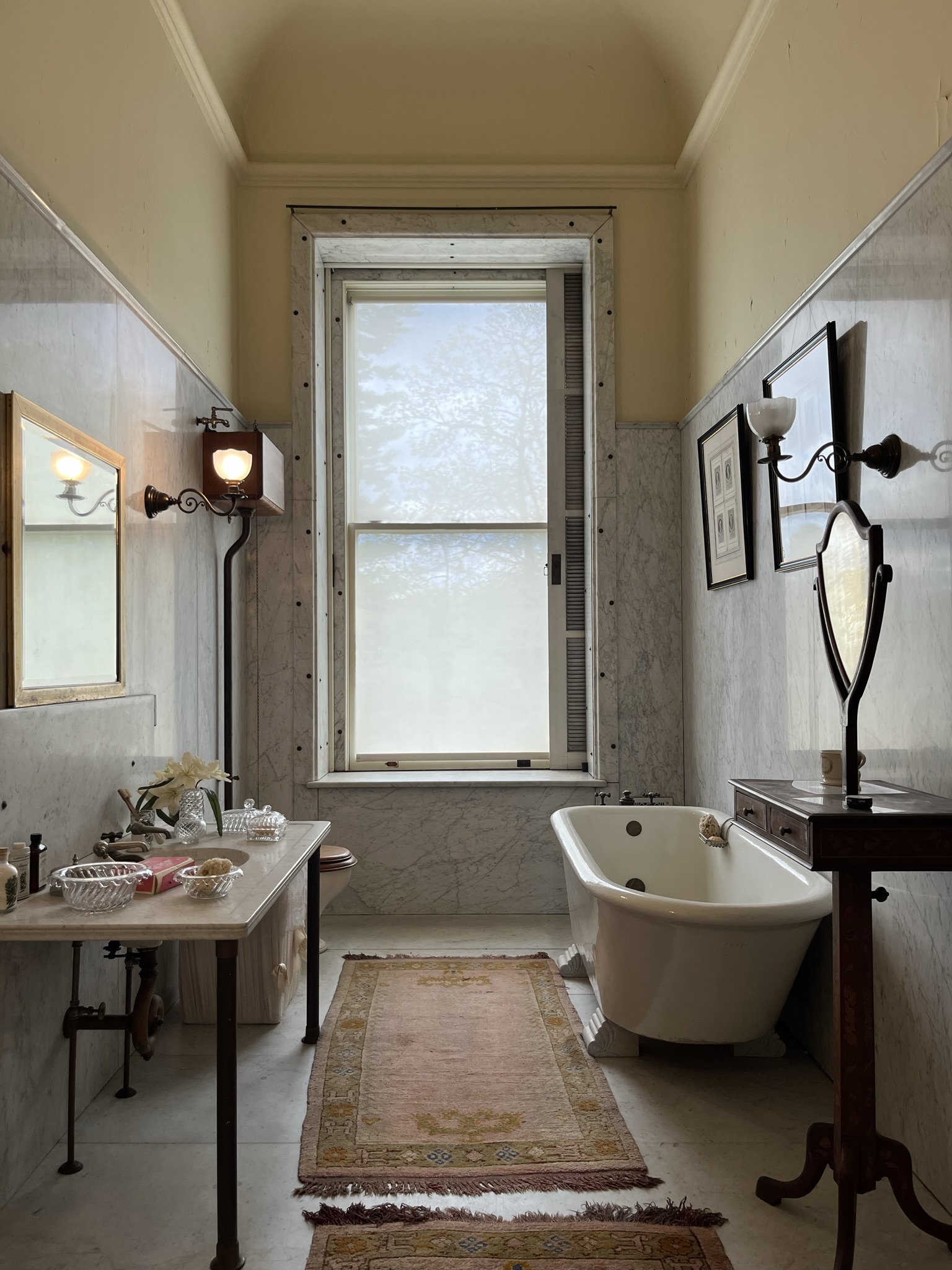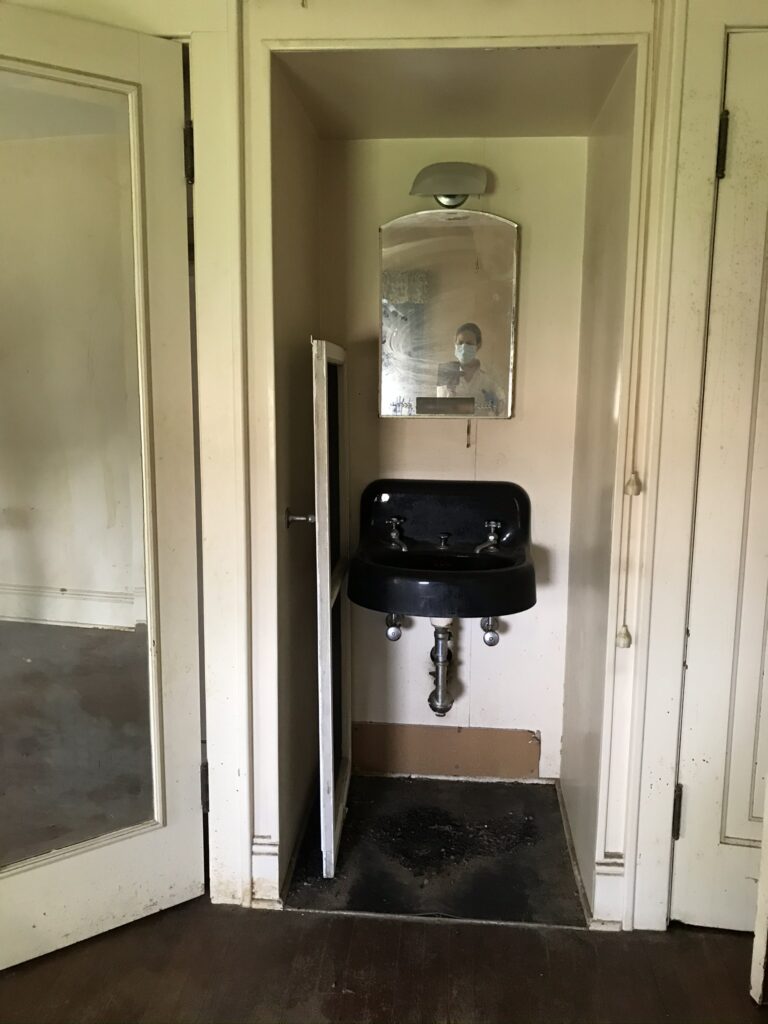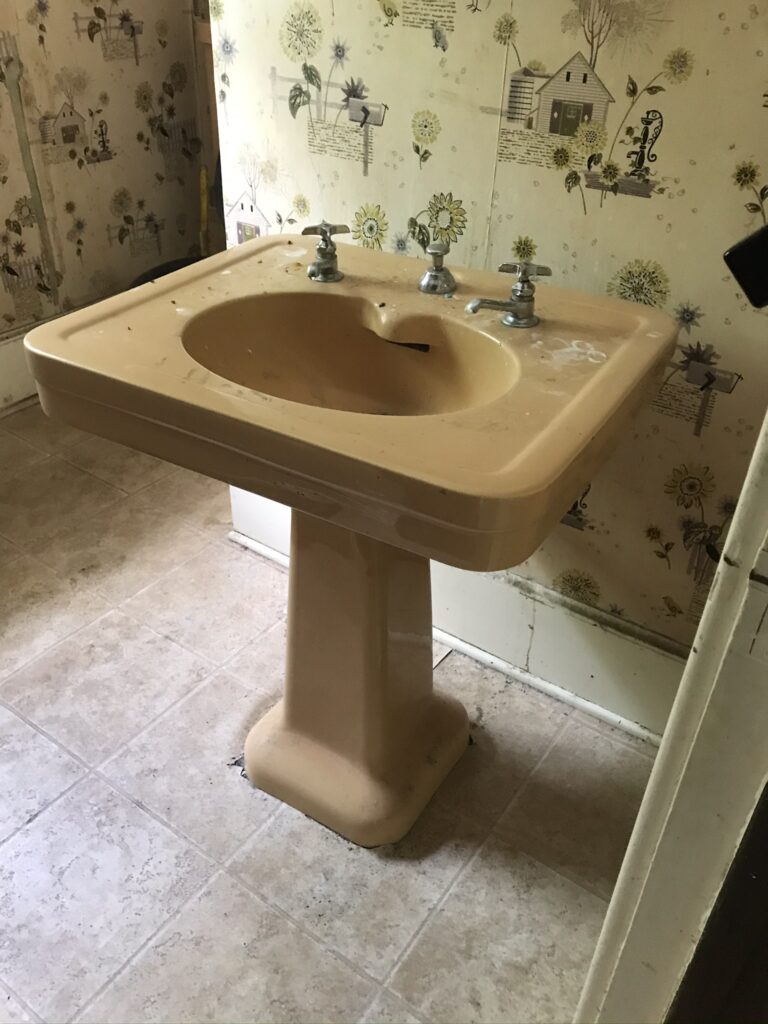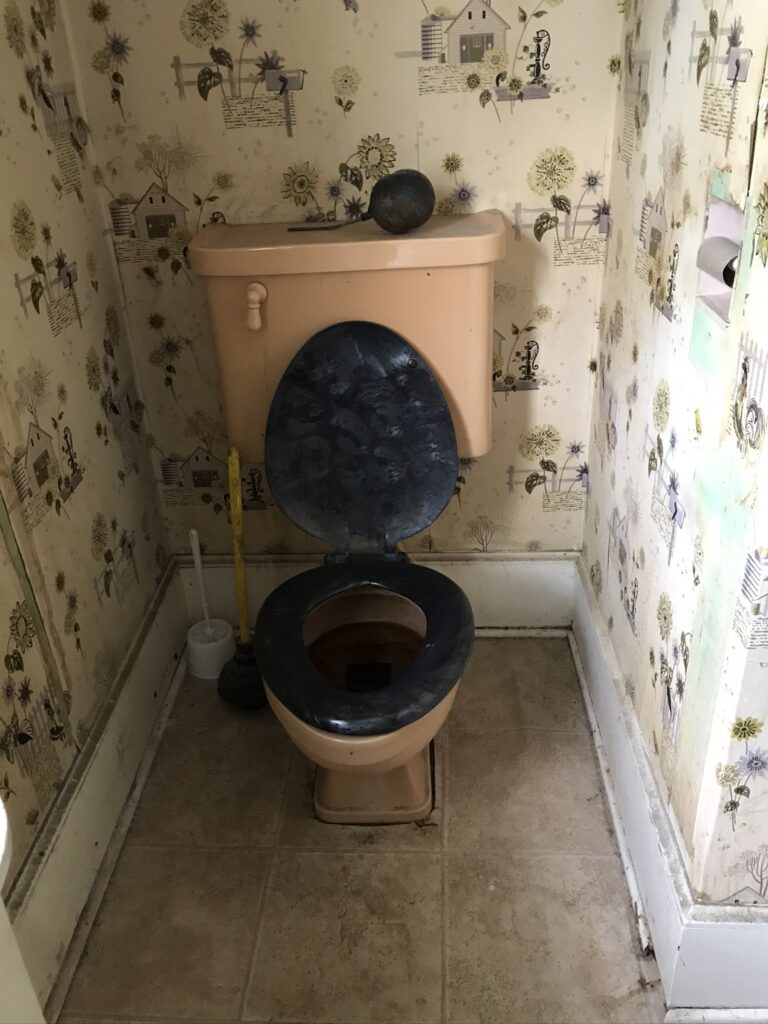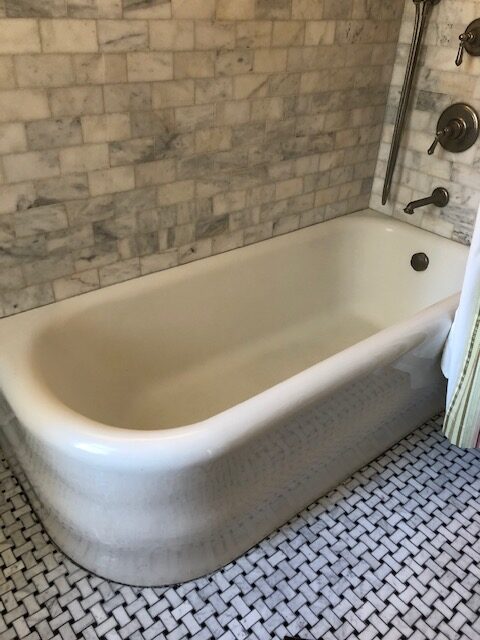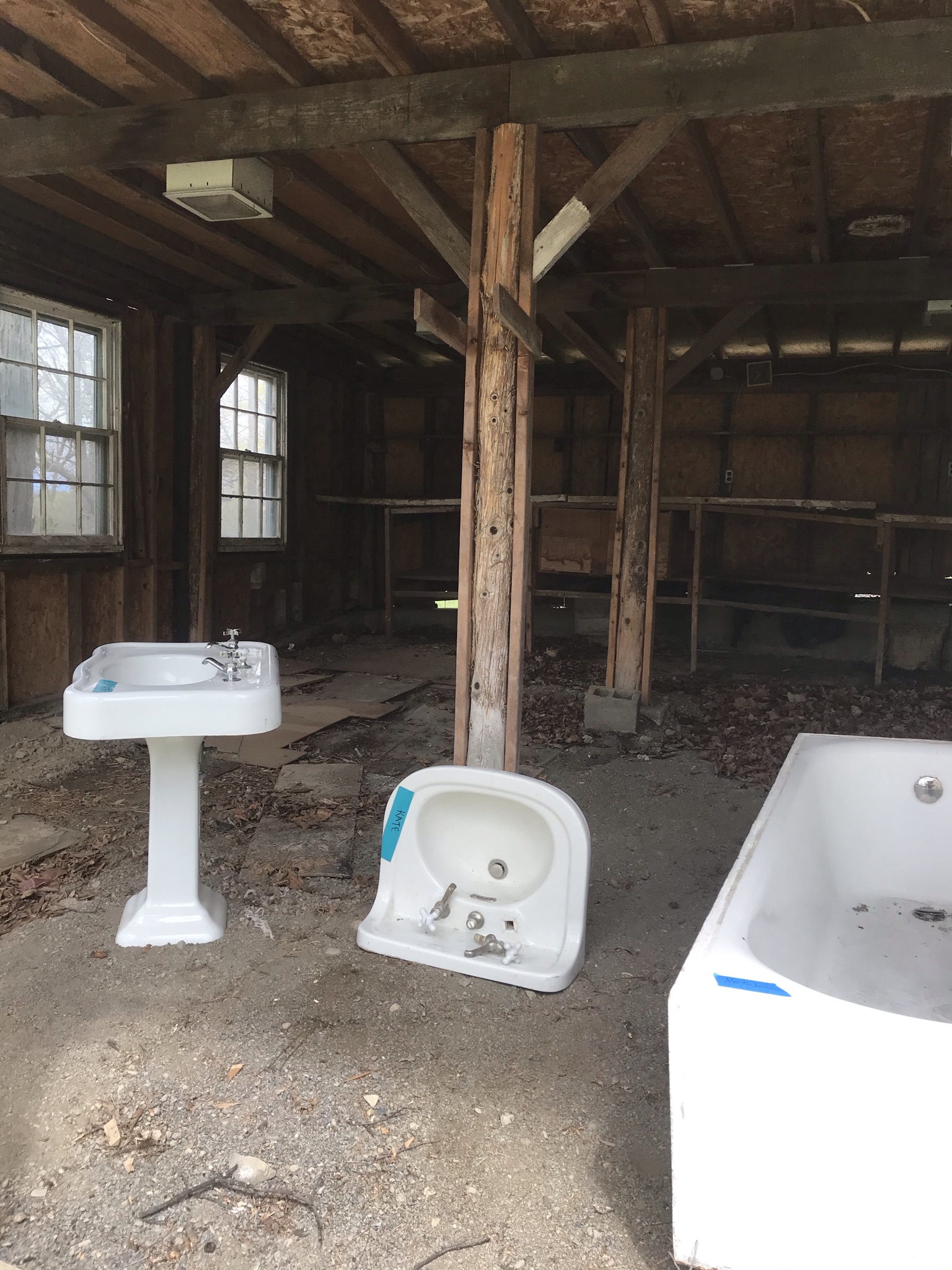What Do You Do in the Bath?
Bathrooms are among my favorite parts of a house. So I was thrilled to write a couple of blog posts recently for CIRCA Old Houses about this most sacred room. Plumbing fixtures (clawfoot tubs, pedestal sinks, cross head taps) can be incredibly beautiful, even delightful in their quirkiness, and the palette of materials can range from mellow marble to crackled porcelain to vibrant polychromatic ceramic.
I’m working on a longer post about bathrooms in history (fascinating!). In the meantime, I want to get a bit more personal.
First, if you have original bathroom fixtures, please think twice before replacing them. Not that there aren’t salvage warehouses and many, many people like me who would love to recycle your old fixtures into our own homes…good evidence that 1) you have something really special and 2) there are plumbers who understand how to work with vintage fixtures.
A few years ago, I had the opportunity to see a house with these ca-1920s fixtures still in place. Where some people might say, “Eewwww…,” old house people say, “Ohhhhhh!!” To my joy, friends purchased the property and preserved the fixtures (with judicious applications of cleaning solution).
Here’s a story of a lovely bathtub…that, despite near-perfect condition, was evicted from its ca-1900 New Jersey home. Lucky for me, it wound up at Hudson Valley House Parts in Newburgh, NY. It now lives with its newfound sink friends (from Zaborski Emporium) in a ca-1900 house rehabbed by Worth Preserving in Staatsburg, NY.
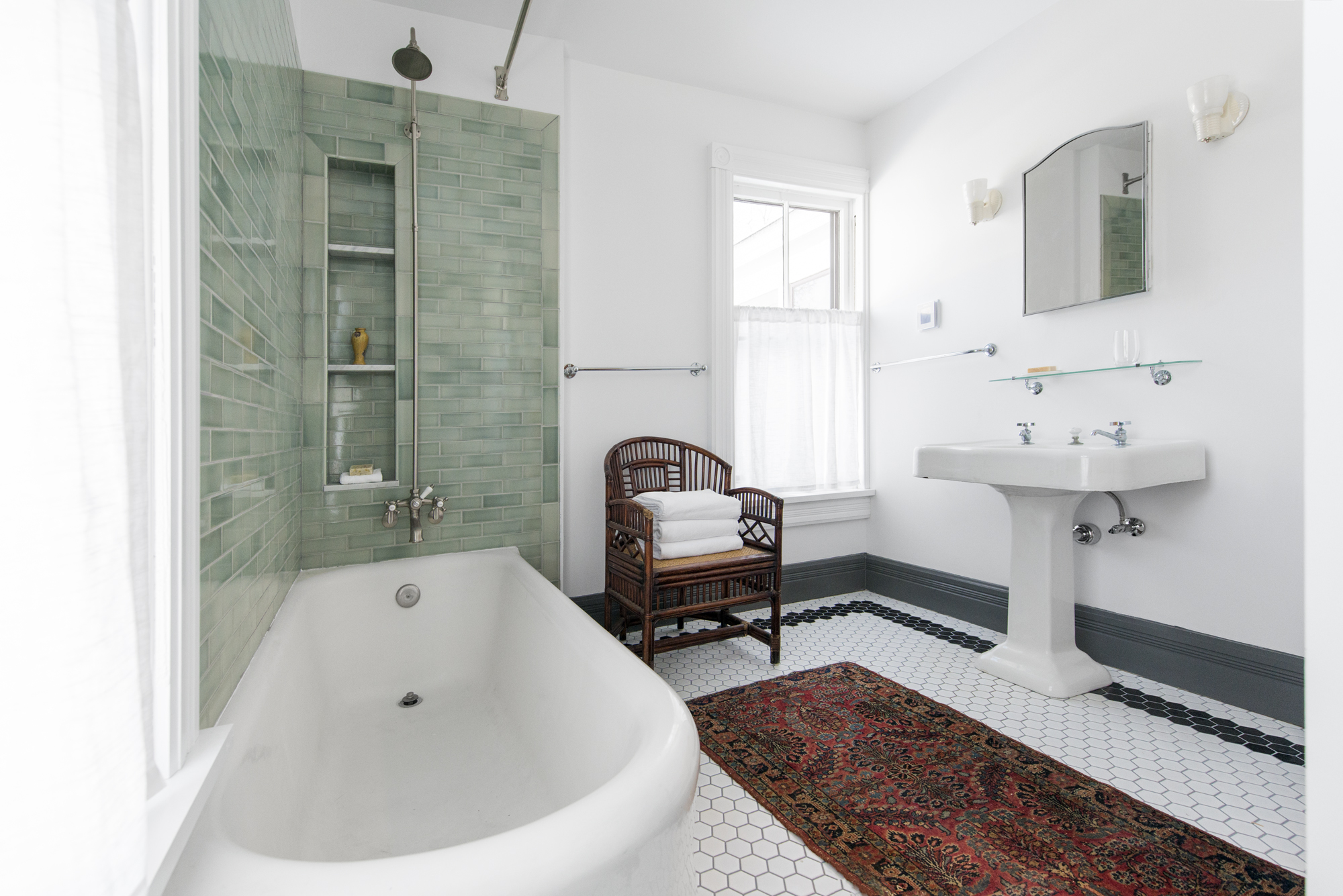
Photo above by Em McCann Zauder, chair & rug by Quittner Home
Second, details are important, especially in the loo. Looking at the photo above, I remember every single decision that went into this space – the basic layout, the fixtures, the tile, the hardware, the lighting, the accessories. I can also see about seven things I might have done differently. And you know where the photographer was sitting when she took this photo? You got it – on the toilet. Hands down, it’s the best place for seeing things as they really are (literally and philosophically).
Here’s a detail I noticed when staying at a very nice Boston hotel recently (and, yes, I was sitting on the toilet):
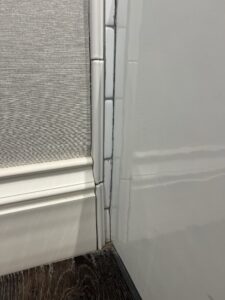
This is where the outside wall of the bathtub (on the right) meets the wall, baseboard and floor. While I agree with the decision not to run the wood baseboard right up to the tub (water is bound to escape, compromise the joint and ultimately eat into the wall), this skinny tile detail doesn’t quite solve the problem. And it looks fussy and weird. Better if the whole tile surround were a full tile-width larger.
In the Staatsburg photo above, we restored one window (foreground, on the left) with safety glass, given its proximity to the shower. Also replaced was the wood sill (on the left) with “moisture resistant” trim since water is likely to accumulate on the horizontal surface.
We’ve all seen much worse. Light switches that hit right at the top of tile wainscoting and require a bit of “creative” shaving or chiseling is one outrage that comes to mind. I won’t say more – that’s what @pleasehatethesethings is for…
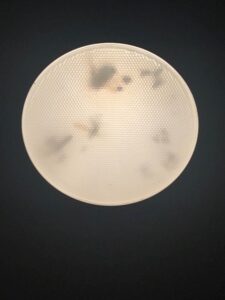
Lastly… Does the photo on the right show the moon? No. It’s one more bathroom bugaboo. Seriously, these are insects that get into the housing of recessed lights over our tub. A chandelier over a clawfoot tub may look classy, but getting electrocuted is definitely not cool. Code doesn’t allow electrical fixtures or switches to be within reach of a person in a shower or tub. However, recessed lights are okay because, technically, they’re in the ceiling, not in the same room.
Cleaning bugs out of light fixtures is easy – one of those seasonal tasks that keeps you in tune with your house. Making smart decisions about plumbing, tiling and carpentry – not only what’s functional, but also what’s appropriate for an old house – is harder. I’m constantly looking and learning!
One more inspiration image before I go… This bathroom from the Mills Mansion (Staatsburgh State Historic Site) is quite nearly perfect.
